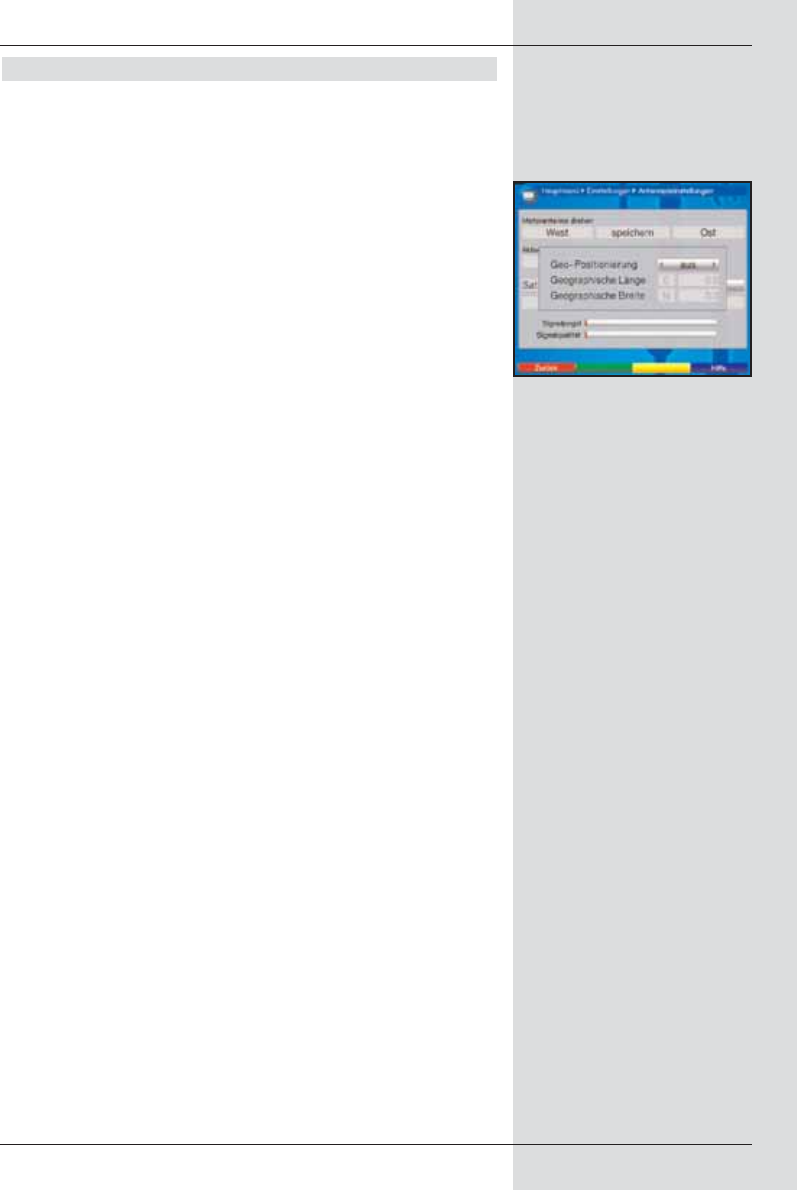
10.2 Geo-positioning
If you have a suitable motor, and if the geographical co-
ordinates of your location are known, this function can
facilitate finding the individual satellite positions. The co-
ordinates for a number of German towns and cities are
included in the Annexure (Point 14).
Note! Only switch on the geo-positoning function if your
DiSEqC motor supports this function.
> As described above, call up the menu for adjusting
settings of the motor antenna.
> Use the arrow keys to mark the field Geo.Pos.
> Confirm by pressing OK. The menu used to enter the
location will be displayed. (Fig. 10-9)
> Use the arrow keys left/right to switch the geo-
positioning function on or off.
> Use the arrow keys to select the field for entering
the geographical longitude.
> Use the numeric keys to enter the geographical
longitude.
> Now press the arrow key left.
> In this field, use the OK key to indicate whether the
value entered refers to longitude East (East) or
longitude West (W).
> Now use the arrow keys to mark the field used to
enter the geographical latitude.
> Use the numeric keys to enter the geographical
latitude.
> Now press the arrow key left.
> In this field, use the OK key to indicate whether the
value enter refers to latitude North (N) or latitude
South (S).
> Press the Back key to return to the LNB settings.
The data relating to your location must be entered as a
decimal value, correct to one decimal place. As the co-
ordinates are often stated in degrees, minutes and seconds,
these must be converted to decimal values as follows:
The value for degrees is not affected by the conversion. The
minutes are divided by 60, and rounded to one decimal
place. The result of this division is added to the value for full
degrees.
The seconds are not taken into consideration, as they do not
affect the first decimal place.
Example: Co-ordinates of Daun/Germany
93
(Fig. 10-9)
BED_ANL_DIGICORDER_S2_28/03.QXD 30.03.2006 11:38 Uhr Seite 93


















